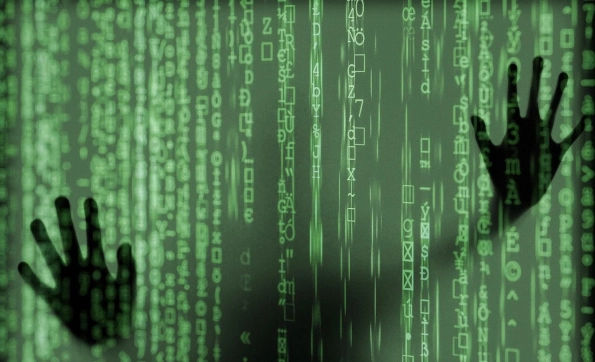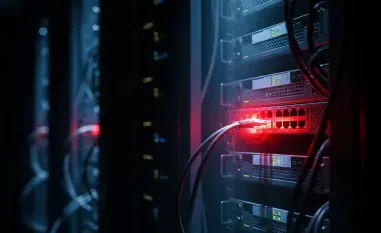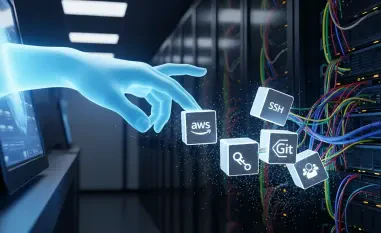As the 2024 U.S. Presidential Election approaches, cyber threats are intensifying, posing a significant risk to the electoral process, voters, and campaign integrity. The latest findings from FortiGuard Labs’ Threat Intelligence Report outline a concerning surge in cyber activities targeting the electoral landscape.
Rising Phishing Scams Targeting Voters
Proliferation of Phishing Kits
Cyber adversaries are increasingly turning to phishing to deceive voters. FortiGuard Labs highlights the rampant availability of affordable phishing kits on the darknet. These kits impersonate presidential candidates and their campaigns, aiming to harvest sensitive personal information such as names, addresses, and credit card details. Designed to look legitimate, these phishing kits can trick unsuspecting voters, leading to identity theft and financial fraud. The easy accessibility and low cost of these kits have significantly lowered the barrier for malicious actors to launch sophisticated phishing attacks.
As the election garners heightened public scrutiny, the surge in phishing scams targeting voters poses a multifaceted threat. The use of detailed impersonation strategies enables attackers to create convincing campaign sites and emails that can easily deceive even the most cautious individuals. Once voters’ personal information is harvested, it can be sold on the black market or used in various fraudulent activities. The ease with which these phishing kits can be deployed underscores a critical vulnerability in the digital age’s political landscape, demonstrating an urgent need for enhanced public awareness and more robust cybersecurity measures.
Impact on Public Trust
The uptick in phishing attempts targeting voters has broader implications regarding public trust in the electoral process. As more voters fall victim to these scams, confidence in the integrity of the election dwindles. This underscores the necessity for voters to exercise caution and verify the legitimacy of any campaign-related communication they receive. The erosion of public trust in the electoral process can have long-lasting repercussions, shaking the very foundation of democratic systems.
The psychological impact of these phishing scams extends beyond individual victims, fostering an atmosphere of mistrust and skepticism. If voters begin to doubt the authenticity of communications from candidates and official electoral bodies, their overall participation in the democratic process may wane. By undermining trust in the electoral mechanism, these cyber threats could inadvertently suppress voter turnout and engagement, thereby influencing election outcomes. The ongoing efforts by FortiGuard Labs to track and mitigate these threats highlight the critical need for continuous public education and stringent verification protocols to preserve electoral integrity.
Malicious Domain Registrations
Surge in Election-Related Domains
FortiGuard Labs reports over 1,000 new potentially malicious domains registered in 2024. These domains frequently incorporate election-related terms and are crafted to appear as genuine campaign or government websites. This trend indicates an orchestrated effort by cybercriminals to exploit the heightened interest in the election. By designing these domains to mimic official sites, threat actors can effectively lure users into divulging sensitive information, exacerbating the threat landscape.
The rapid proliferation of these malicious domains represents a significant escalation in cyber threats surrounding the electoral process. These sites often employ sophisticated design and branding elements, making them virtually indistinguishable from legitimate campaign or government websites. The sheer volume of such registrations suggests a coordinated campaign to exploit voter curiosity and engagement. This scenario underscores the critical need for enhanced domain monitoring and validation practices to safeguard the digital landscape as the election approaches.
Exploitation of Major Hosting Providers
Notably, these malicious domains often leverage reputable hosting providers such as Amazon Web Services (AWS) and Cloudflare. By using these credible platforms, threat actors enhance the appearance of legitimacy for their fraudulent websites, making it easier to deceive users and harvest their personal information. The exploitation of major hosting providers not only tarnishes their reputations but also complicates efforts to identify and take down malicious sites swiftly.
The use of well-known hosting platforms by cybercriminals underscores a particularly insidious aspect of the current threat environment. By piggybacking on the credibility of established providers, these attackers add an extra layer of credibility to their deception. This tactic complicates the process for both voters and cybersecurity professionals attempting to distinguish between legitimate and malicious sites. Consequently, it highlights the necessity for continuous collaboration between hosting providers and cybersecurity experts to implement robust detection and mitigation strategies. Enhancing collective defensive capabilities is essential to counteracting the sophisticated techniques employed by cyber adversaries.
Darknet Marketplace Dynamics
Personal Data Breach and Sale
The darknet is a hotbed of illicit activities, with billions of records from U.S. citizens available for purchase. Social Security numbers, personally identifiable information (PII), and credentials are among the data sold on these platforms. FortiGuard Labs reveals that approximately 3% of posts on darknet forums are related to databases from business and government entities. This abundance of readily available data poses a severe threat to both individuals and the broader electoral process.
Access to such vast amounts of personal data enables cybercriminals to launch targeted phishing attacks, misinformation campaigns, and account takeovers. The sale of this information disrupts individual privacy and undermines public confidence in the security of their personal information. The continual growth of this marketplace indicates an urgent need for improved data protection practices and regulatory measures to combat the widespread distribution of sensitive information. This environment of pervasive data breaches significantly heightens the risk of more elaborate and destructive cyber attacks during the election period.
Risks and Utilization
This wealth of data can be exploited for phishing scams, misinformation campaigns, and account takeovers. The sale of such information poses a significant threat to the integrity of the electoral process, as compromised data could be used to sway public opinion or disrupt election-related operations. Additionally, the availability of this data on darknet forums means that virtually anyone can purchase and misuse it, escalating the potential for widespread harm.
The wide availability of personal data on darknet marketplaces facilitates a variety of malicious activities designed to disrupt the electoral process. Misinformation campaigns driven by this data can significantly influence public opinion, potentially altering the outcome of the election. Moreover, the targeting of election officials and voters through credential-stuffing attacks and account takeovers threatens the operational integrity of electoral systems. The need for stringent access controls and continuous monitoring of electoral infrastructure is paramount to mitigating these risks and ensuring a fair and secure democratic process.
Escalating Ransomware Attacks
Increase in Targeted Attacks
Ransomware attacks against U.S. government entities have surged by 28% in 2024. These attacks have targeted critical public sector institutions involved in the electoral process, aiming to disrupt operations and extract substantial ransoms. This increase highlights the concentrated effort by threat actors to undermine government functionality during a pivotal election period. The disruption of essential services and the financial toll of these attacks underscore their severe implications for electoral stability.
The surge in ransomware incidents targeting government entities indicates a deliberate strategy to cripple key functions during the electoral season. These attacks often paralyze critical systems, necessitating costly and time-consuming recovery efforts. The financial and operational strain imposed by these incidents further exacerbates the challenges faced by public sector institutions already burdened by the administrative complexities of conducting an election. The marked year-over-year increase in such attacks points to a heightened threat landscape demanding proactive and resilient cybersecurity defenses.
Consequences for Electoral Integrity
Ransomware incidents not only impede government operations but also erode public confidence in election security. The rise in such attacks underscores the need for robust cybersecurity defenses to ensure the resilience of electoral systems and the uninterrupted conduct of elections. Ensuring that government entities can withstand and swiftly recover from ransomware attacks is crucial for maintaining the integrity and functionality of the electoral process.
The continuous escalation of ransomware attacks necessitates a strategic response to fortify electoral infrastructure. Public confidence in the electoral process is critically dependent on the perceived integrity and security of government systems. Proactive measures such as regular security audits, comprehensive incident response plans, and public education initiatives are essential. These strategies not only mitigate the immediate impact of ransomware attacks but also foster a resilient and secure electoral environment. The importance of maintaining robust defenses against these persistent threats cannot be overstated, particularly during the high-stakes period of a presidential election.
Advanced Phishing Tools and Techniques
Sophisticated Phishing Kits
FortiGuard Labs identified sophisticated phishing kits sold for as much as $1,260 each. These kits are meticulously designed to impersonate U.S. presidential candidates and their campaigns, effectively gathering personal information. The usage of such kits reflects an increased level of sophistication in phishing methods. These advanced kits simplify the process for attackers to create highly convincing phishing campaigns, posing a formidable threat to voters’ personal information.
The high cost of these sophisticated kits is indicative of their advanced features and effectiveness. By closely mimicking official campaign websites and communications, these kits can deceive even the most discerning individuals. The detailed customization options and ease of deployment offered by these kits make them a valuable asset for cybercriminals aiming to exploit the electoral period. The increased accessibility of such sophisticated tools signifies a notable escalation in the phishing threat landscape, necessitating enhanced awareness and security measures among voters and campaign staff.
Role of Hosting Providers
The top hosting platforms for these phishing domains include AMAZON-02 and CLOUDFLARENET. These providers, known for their reliability, are unfortunately being exploited by cybercriminals to host malicious sites, which lends an unwarranted sense of legitimacy to their operations. The involvement of such reputable platforms complicates efforts to quickly identify and mitigate these threats, further endangering voter safety and data security.
The exploitation of major hosting providers by cybercriminals highlights a critical vulnerability in the internet’s infrastructure. The trust and credibility associated with these platforms make them attractive points of leverage for attackers aiming to enhance the perceived legitimacy of their fraudulent activities. This situation underscores the importance of continual collaboration between hosting providers and cybersecurity experts to develop robust detection and takedown procedures. Effective measures are essential for ensuring that these platforms cannot be manipulated to facilitate large-scale phishing attacks, especially during pivotal times like national elections.
Flood of Personal Data on Darknet
Availability of Combo Lists
There are over 1.3 billion rows of combo lists (combinations of usernames, email addresses, and passwords) available on darknet forums. This massive trove of information poses a significant threat for credential-stuffing attacks, where attackers use stolen credentials to gain unauthorized access to user accounts. The sheer volume of data available significantly increases the risks of large-scale cyber attacks, particularly against entities involved in the electoral process.
The existence of such extensive combo lists on darknet forums underscores the ubiquitous threat of compromised credentials. Credential-stuffing attacks, fueled by these lists, can lead to unauthorized access to sensitive systems and data breaches, jeopardizing the security of electoral infrastructure. The scale of data available highlights the need for organizations to implement stringent access controls, multi-factor authentication, and continuous monitoring to detect and respond to unauthorized access attempts. This proactive approach is critical in mitigating the risk posed by the widespread availability of compromised credentials.
Financial Fraud Risks
Additionally, around 300,000 rows of credit card data, complete with CVV numbers and birth dates, are circulating on the darknet. This data endangers voters and election officials, exposing them to potential financial fraud and identity theft. The availability of such detailed financial information further elevates the risk profile associated with the 2024 Presidential Election, underscoring the necessity for robust cybersecurity measures.
The sale of credit card data on darknet forums presents a direct financial threat to individuals associated with the electoral process. The combination of names, birth dates, and CVV numbers provides cybercriminals with comprehensive information to execute fraudulent transactions. This environment necessitates vigilant monitoring of financial activities and the implementation of advanced fraud detection systems. The exposure of such sensitive data highlights gaps in current security measures, calling for reinforced protection mechanisms to safeguard both personal and financial information during the critical election period.
Recommendations for Enhancing Cybersecurity
Vigilance and Surveillance
FortiGuard Labs suggests maintaining heightened surveillance to detect and mitigate suspicious activities promptly. By proactively monitoring for potential threats, organizations can better defend against cyber attacks. Continuous vigilance is essential for identifying anomalies and potential security breaches in real time.
Implementing state-of-the-art monitoring tools and systems enables organizations to maintain a proactive stance in threat detection. Real-time surveillance coupled with automated alert mechanisms allows for swift responses to potential security incidents. It’s crucial for electoral bodies and related organizations to invest in advanced technologies that enhance their monitoring capabilities. These measures translate into a robust defensive posture, capable of withstanding the dynamic cyber threats confronting the 2024 U.S. Presidential Election.
Implementation of Security Protocols
The report emphasizes the importance of implementing multi-factor authentication, enforcing strong password policies, and regularly updating software and systems. These foundational security practices are crucial in mitigating the risk of unauthorized access and securing sensitive information.
Multi-factor authentication adds an additional layer of security, making it significantly more challenging for attackers to gain access using stolen credentials. Strong password policies reduce the likelihood of successful credential-stuffing attacks. Regular software updates patch known vulnerabilities, ensuring that systems remain resilient against emerging threats. These measures collectively fortify the cybersecurity infrastructure of electoral systems, minimizing the risk of disruptions and data breaches during the election.
Endpoint Protection and Employee Training
As the 2024 U.S. Presidential Election draws near, concerns about cyber threats are growing, posing serious risks to the electoral process, integrity of campaigns, and voter confidence. Recent insights from FortiGuard Labs’ Threat Intelligence Report highlight a worrisome increase in cyber activities aimed at election-related systems. This uptick in cyber threats underscores the vulnerabilities within the digital infrastructure that supports the election process. Attackers are employing a variety of tactics, from phishing campaigns to more sophisticated ransomware attacks, aiming to disrupt or manipulate election outcomes.
The report reveals that both foreign and domestic actors are actively probing for weaknesses. Their goals range from stealing sensitive data to sowing discord among the electorate. This escalation in cyber activities not only compromises the security of voting systems but also erodes public trust in the legitimacy of electoral outcomes. Election officials, cybersecurity experts, and policymakers are urged to be vigilant and proactive in implementing robust security measures. As we inch closer to Election Day, ensuring the integrity of our democratic processes has never been more crucial.













